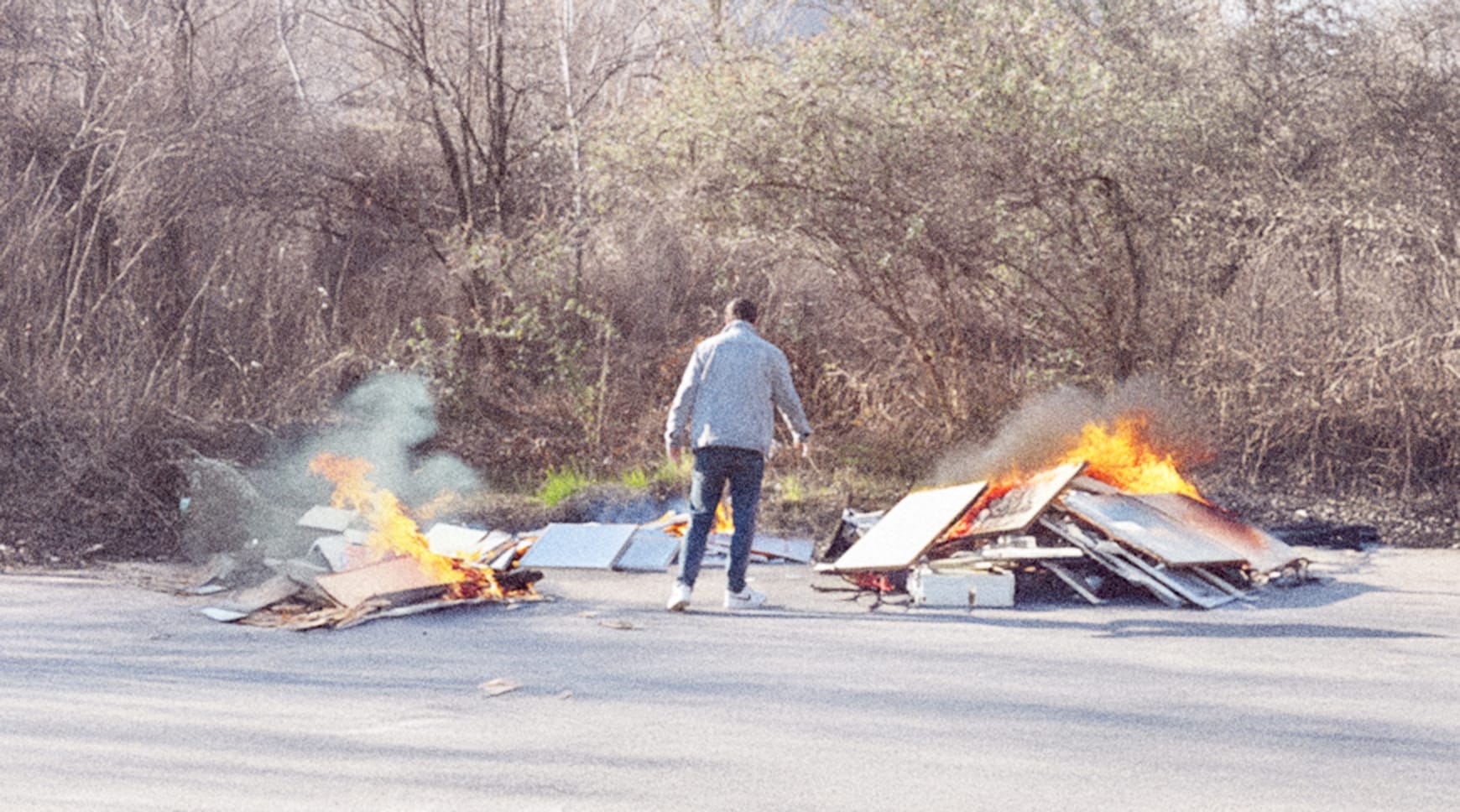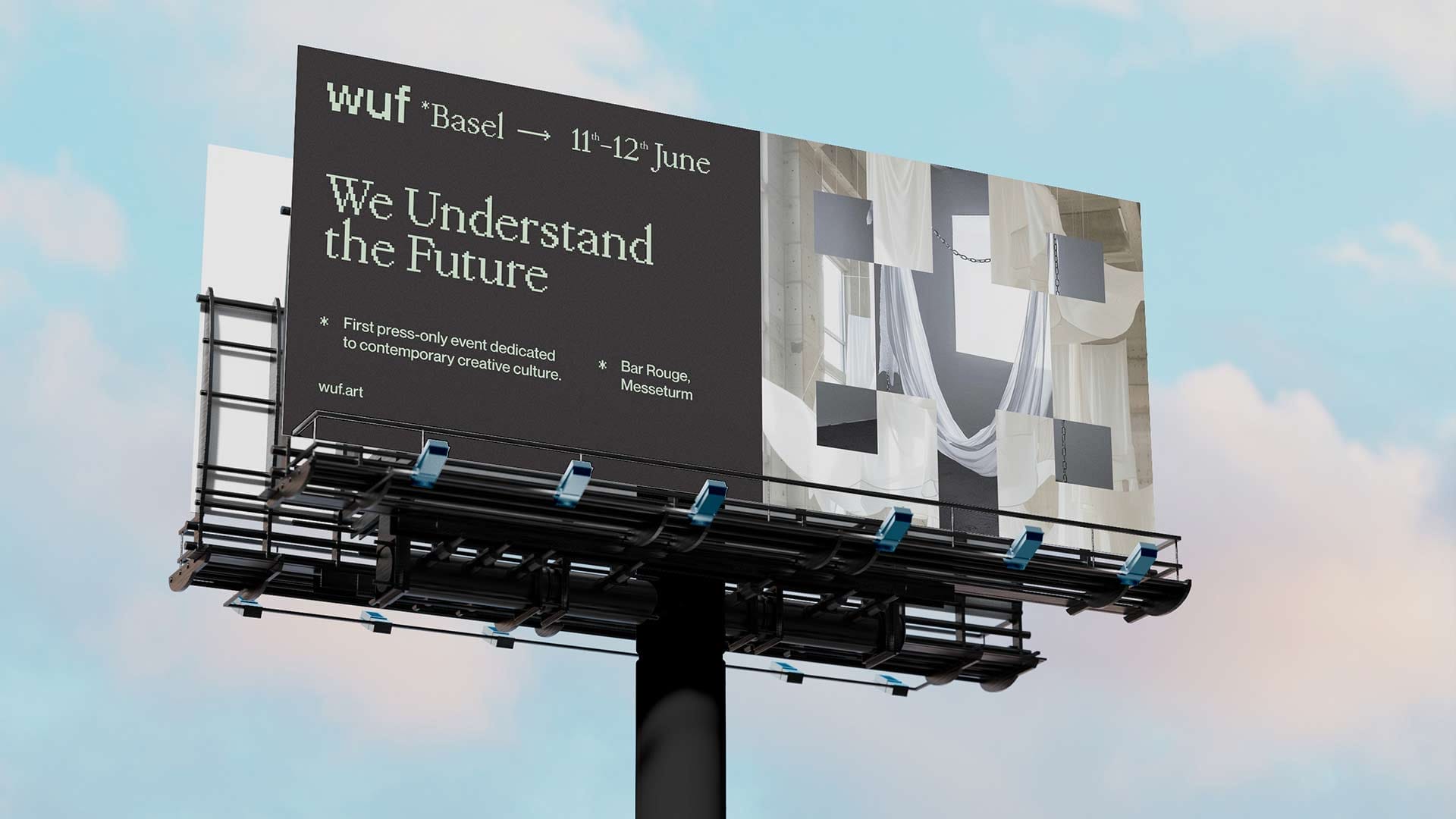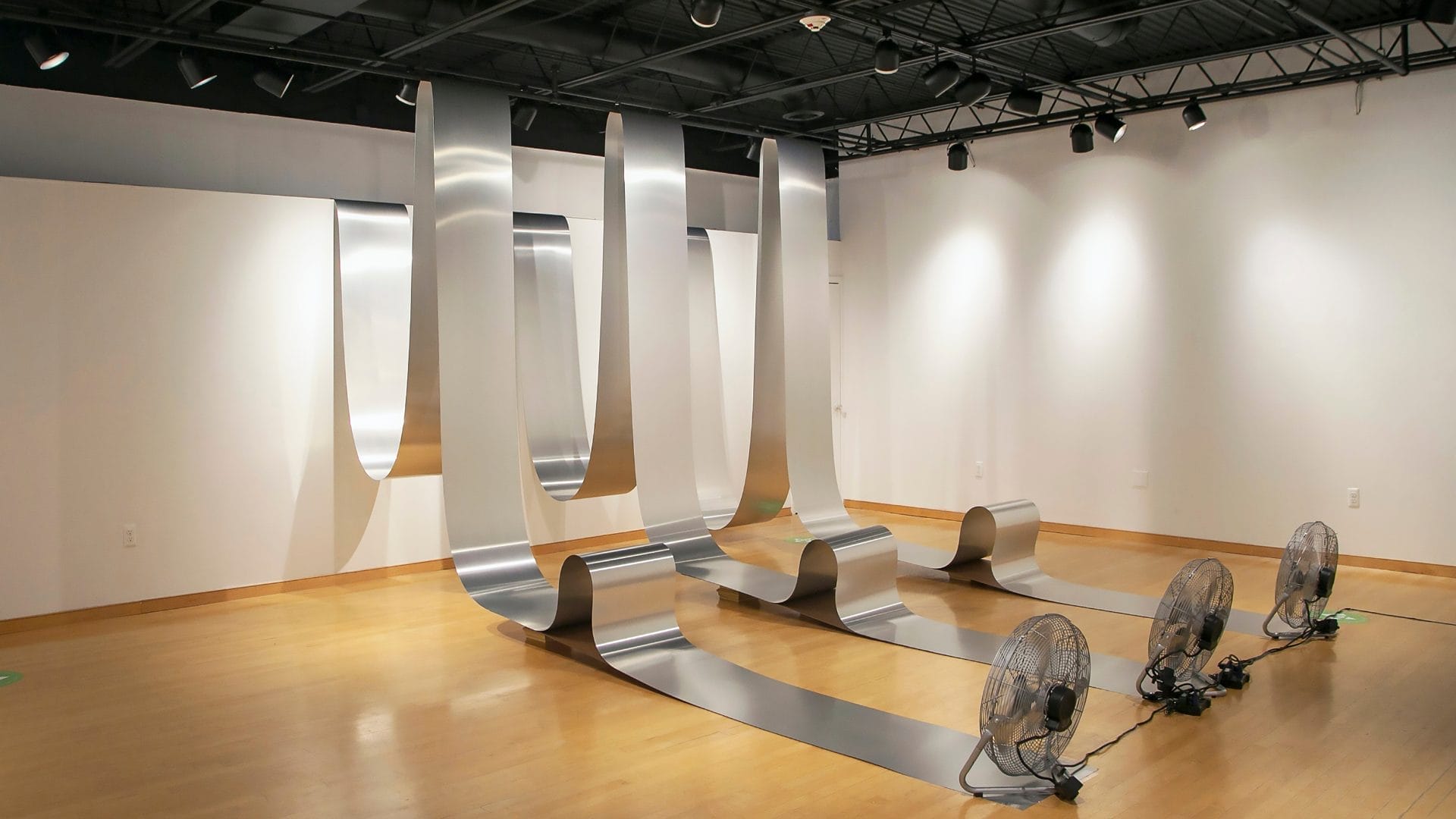
Fakewhale in Dialogue with Sizhu Li
Having lived and worked across two continents, Sizhu Li has cultivated a distinctive artistic language that merges kinetic movement, minimalism, and poetic storytelling. Her large-scale installations transform space into a dynamic material, where mechanized motion and rhythmic repetition create immersive landscapes. Deeply influenced by Futurism, Minimalism, and traditional Chinese philosophy, her works explore the tension between simplicity and complexity, evoking ephemeral natural phenomena within the chaos of modern life. At FakeWhale, we had the opportunity to delve into Li’s creative process, her inspirations, and the ongoing evolution of her touring project Moonment.
Fakewhale: Your kinetic installations often incorporate mechanical movement to create a rhythmic, almost meditative experience for the viewer. What draws you to this mode of expression, and how do you see motion as a form of storytelling?
Sizhu Li: My interest in kinetic installations really started from my multidisciplinary studies in school. Swift major from Illustration, I picked up wood class and learned some computational programming from a visiting engineer. But honestly, a lot of my early explorations were just me following my intuition, doing all kinds of “nonsense” experiments but helped me discover new directions. My work was static at first, but no matter how much I adjusted it, something always felt missing. It wasn’t until I started incorporating motion that everything clicked, I finally felt like I was on the right path.
I see motion as a form of storytelling because it instantly brings life to materials that would otherwise just sit there. Movement has this incredible ability to create a sense of presence, almost like the work becomes its own character in a scene. Storytelling needs something alive too, something that can respond or repeat in a way that resonates with people. That’s what I try to do with my kinetic installations, use rhythm, repetition, and flow to pull viewers into a moment that feels immersive and engage.

The interplay between simplicity and complexity is central to your work. You reference ancient Chinese philosophy and poetry as inspirations. How do these influences shape the emotional or intellectual depth of your installations?
Poetry, especially ancient Chinese poetry that has survived through time, is the most direct way to express universal emotions. No matter how far civilization has advanced, humans still share the same feelings, love, longing, sorrow, hope. These emotions connect me to people. I believe both artists and audiences are searching for something through art, almost like broken souls seeking one another.
Chinese philosophy, especially Taoism, deeply influences me. It is not just a belief system but a way of understanding how the world moves and flows. Its influence is so ingrained in Chinese culture that it shapes the way we think, even without realizing it. In some ways, Taoist concepts resemble Western physics. The idea of Yin and Yang, for example, expresses a similar principle to the conservation of energy, but instead of a mathematical formula, it is explained through abstraction, balance, and harmony.
Through my installations, I hope to bring people into this philosophy, to create a space where they can feel connected, find balance, and perhaps even experience healing.
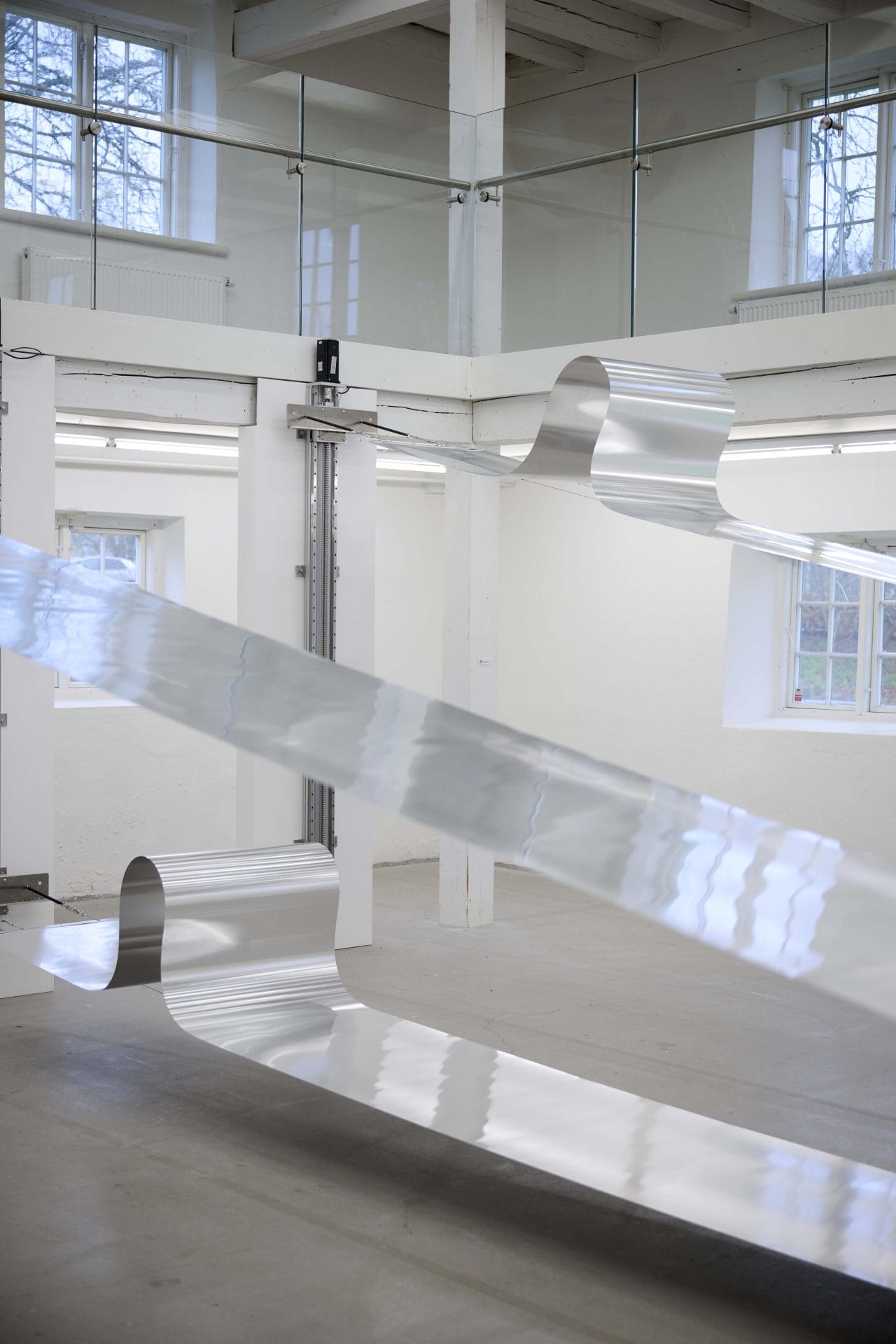
Your use of materials is quite striking, often unrefined yet imbued with a sense of nostalgia and melancholy. Can you share your process for choosing materials and how their physical qualities contribute to the atmosphere of your works?
I first discovered the form of the metal wave by accident while taking down an experimental light installation in my studio. After I removed metal sheets from the high ceiling, I rolled one into a tube, and suddenly, a wave emerged in the middle of the sheet. That moment was extremely exciting for me, I felt as if I had found a way for metal to breathe.
People often think of metal as cold, industrial, and rigid. But to me, aluminum is alive. It bends, flexes, and responds to its surroundings. It is both lightweight and strong, reflective and absorbing. When touched by wind or pulled by gravity, it moves, swinging, crumpling, creating a rhythm that feels deeply human. In these movements, I see poetry, like a baby taking its first steps or a penguin learning to balance. This is how I choose my materials: not just for what they are, but for the life they can reveal.
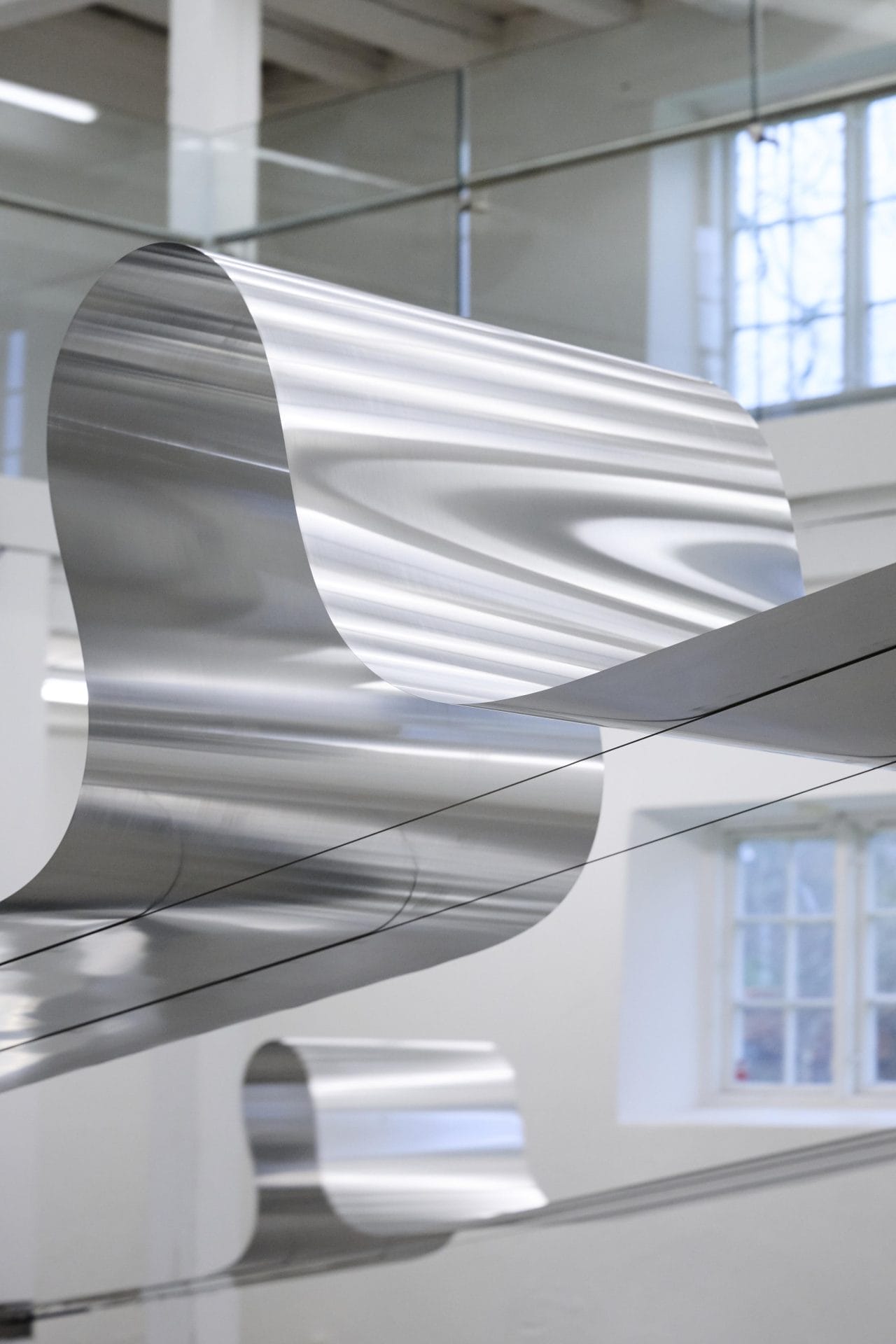
The concept of space in your art is fascinating, as you treat it as a tangible material, just like metal or wood. How do you approach designing an installation in relation to its environment? Do you see space as a collaborator in your work?
Creating site-specific work allows me to localize my installations to different regions, which is an important part of my artistic vision. For example, my project Moonment is a touring installation where each exhibition site becomes a pin on a map, connecting people across different places and times. Even if they experience the work separately, they become linked through shared memory.
Local architecture carries the essence of a culture. When I design an installation, I consider not only the physical space but also the history, energy, and people of the place. I see space as more than a backdrop—it is a collaborator. It shapes how my work is seen, felt, and understood. Creating a piece specifically for a site, in response to its unique character, is my way of sincerely engaging with the local environment and community.

There’s a Futurist quality to your work, particularly in the way movement is employed in a repetitive, Sisyphean manner. How do you see your work engaging with contemporary conversations about technology, automation, or the passage of time?
I believe that a contemporary artist should either talk about contemporary issues or use contemporary materials to explore timeless themes, or both. Futurism has a spirit of constantly engaging with science and technology as they evolve. I see technology, mechanical automation, and science as contemporary materials, just like oil paint was once a new technology in the early 15th century, replacing egg tempera as the dominant medium.
In my work, movement created by new technology expresses repetitive motion, can be seen as both a Sisyphean struggle and the cyclical nature of Yin and Yang. This bridges philosophies from both the East and the West in relation to the passage of time. Time moves life forward, but in a continuous rolling cycle. Just as each human life leaves an impact on the world, pushing history forward.
Your installations often create immersive environments that engage multiple senses. Do you consider audience interaction when designing your works, and how do you hope viewers will experience them?
I think a lot about how the audience approaches my work. Using multiple senses and immersive environment allow me to completely transport viewers out of their familiar surroundings.
For my site-specific installations, I carefully design what the audience sees at first glance and what details gradually draw their attention at a second or third viewpoint. The entire viewing experience for my work are very important. How people move through the space and the specific viewpoints they encounter is an essential part of the storytelling.
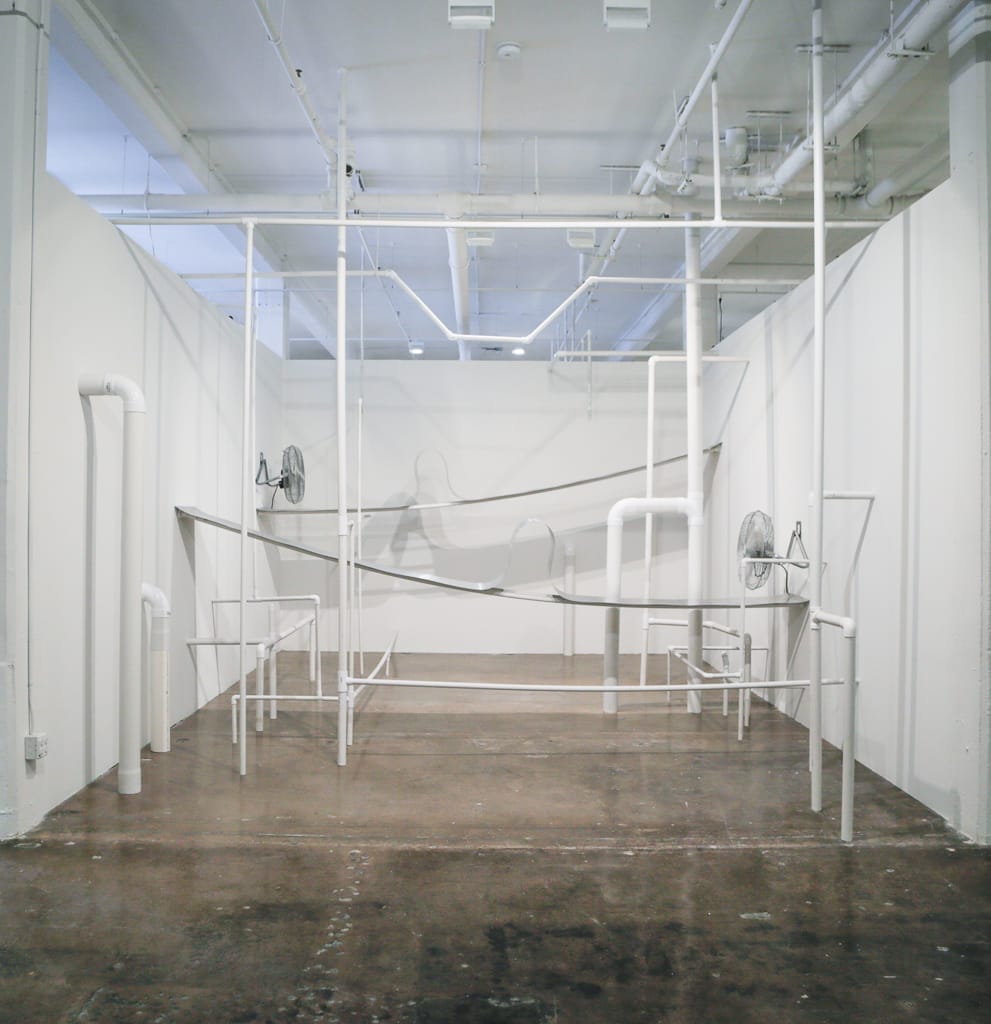
Having exhibited in a variety of spaces, from museums to public art projects, how does the context of an exhibition influence the meaning or impact of your work?
For institutional exhibitions, I focus more on the artwork itself while also adapting it site-specifically both formally and conceptually to the venue. For public art projects, in addition to engaging with the community and the history of the site, I must consider feasibility and safety. I also try to express ideas in a more direct way so they can connect with a broader audience in an open environment.
As an artist who has worked in both China and the U.S., do you find that your cultural background influences the way audiences interpret your work in different regions? Have you noticed any distinct responses based on cultural context?
Interestingly, I haven’t noticed a huge difference in how audiences from different regions interpret my work. They all can perceive the poetic storytelling, engineering physics and so on. However, one distinction I did noticed: in U.S. and Europe exhibitions, people more tend to interpret the repetitive motion in my work as a Sisyphean struggle, while in China, they are more likely to associate it with the Taoist Yin and Yang or life cycle in Zen philosophy.
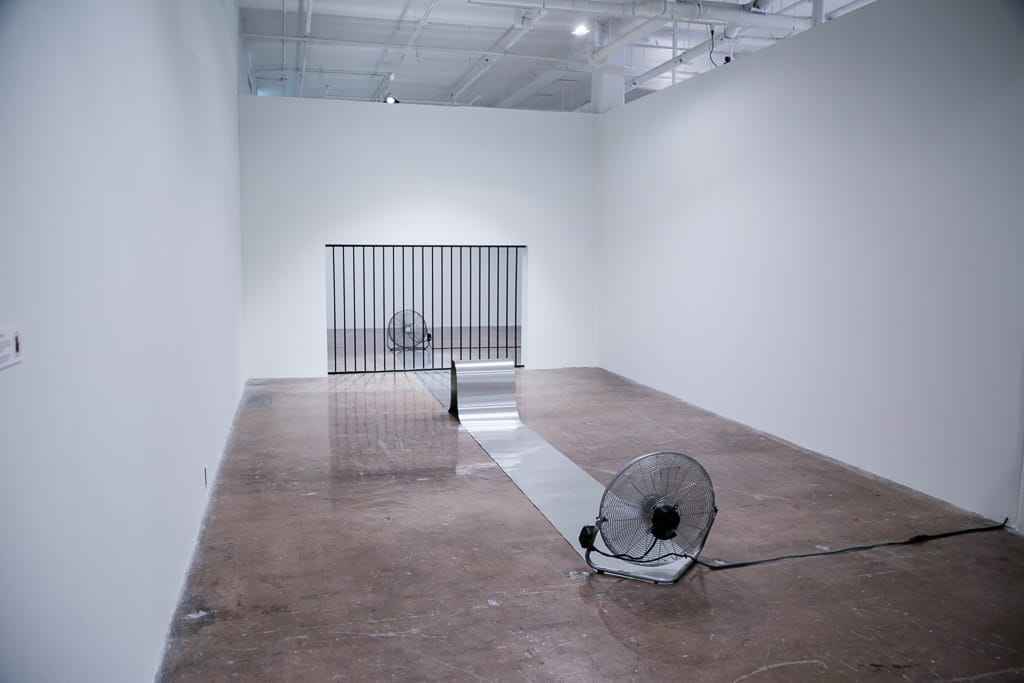
What directions are you currently exploring in your practice? Are there any new projects, themes, or techniques you are excited about developing soon?
Inspired by my latest and first-ever video piece. I am extremely excited to expand my art practice into a new direction, collaborative work, especially in performance and sound. Now, I am contacting with a sound artist to seek a possible collaboration of a series of interactive instrumental installations that can be used in live performances and also exhibited as independent artwork. Furthermore, I have a vision to create an experimental theater performance. I want to keep exploring choreography, costume design, and stage settings, pushing the boundaries of my practice in new ways.
I am also drawn to working with recycled aluminum sheets, my metal waves typically require brand-new, flawless aluminum sheets for site-specific exhibitions, the smallest damage, even from manufacturing, can disrupt the entire movement sequence. Recently, I wanted to explore the opposite, using the most damaged and worn sheets to create an installation that speaks about vulnerability, self-acceptance, and Maximalism

fakewhale
Founded in 2021, Fakewhale advocates the digital art market's evolution. Viewing NFT technology as a container for art, and leveraging the expansive scope of digital culture, Fakewhale strives to shape a new ecosystem in which art and technology become the starting point, rather than the final destination.
You may also like
Curator Spotlight #3: Chen Baoyang
In the third chapter of the “Curator Spotlight” series, the exploration into the interse
The Language of Expectation: Fakewhale in Conversation with Francesco De Prezzo
– “Dear M, good paintings go to galleries, but bad paintings end up everywhere.” W
Inside WUF Basel 2024: A Premier Press-Only Event for Contemporary Creative Culture
Every year, Basel becomes the focal point for the world’s leading journalists and art enthusia


